Smartler - Smartler
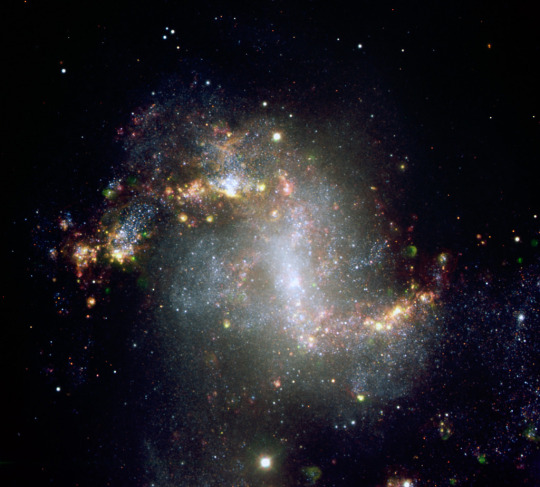
More Posts from Smartler and Others



Mug-Ception!
that one sin.
you know that sin?
You know. That one sin.
The one that you never tell anybody. The one that you’re afraid to tell people, afraid of their judgement, because obviously if they knew they would condemn you. The one that you’ve unwillingly hoarded to yourself, played close to your chest, not letting anyone have so much as a peek. That sin, the one that not even your parents or your best friends or anybody else knows about.
That. One. Sin.
I don’t know when it started. Maybe you were younger, or maybe you were older. Maybe you didn’t know it was wrong, at first, or maybe you knew it was wrong but you did it anyways. Maybe you were pressured into it, felt like you didn’t have a choice. Maybe you were indulging yourself with something that you’d always wanted to try but never had the opportunity to.
And now you look back, and you feel sick. You wish it had never happened in the first place. You wish that you hadn’t been so stupid. You wish that you had listened to whoever had warned you away from it. It wasn’t supposed to be like this, eat this much of you up—it wasn’t supposed to go any further than that first try.
It hurts. You feel dirty. You wonder how God could ever love someone as horrible as you. As dirty as you. As broken as you.
Let me tell you something:
That’s a lie.
Because, secret sin or not, if you have Jesus then you are God’s child.
You have been made clean, whole.
Jesus’ blood is bigger than your sin.
Jesus paid it all.
God loves to forgive.
God loves to heal.
God loves to love.
Don’t hide from him. Run to him. Let him welcome you back.

Shine bright like a blood strain
Net-The-Average-Boy (via not-the-average-boy)
Net the average boy?
What Are the Bright Spots on Ceres?

Dwarf planet Ceres has more than 130 bright areas, and most of them are associated with impact craters. Now, Ceres has revealed some of its well-kept secrets in two new studies in the journal Nature, thanks to data from our Dawn spacecraft.
Two studies have been looking into the mystery behind these bright areas. One study identifies this bright material as a kind of salt, while the other study suggests the detection of ammonia-rich clays.
Study authors write that the bright material is consistent with a type of magnesium sulfate called hexahydrite. A different type of magnesium sulfate is familiar on Earth as Epsom salt.

Researchers, using images from Dawn’s framing camera, suggest that these salt-rich areas were left behind when water-ice sublimated in the past. Impacts from asteroids would have unearthed the mixture of ice and salt.
An image of Occator Crater (below) shows the brightest material on Ceres. Occator itself is 60 miles in diameter, and its central pit, covered by this bright material, measures about 6 miles wide. With its sharp rim and walls, it appears to be among the youngest features on the dwarf planet.

In the second nature study, members of the Dawn science team examined the composition of Ceres and found evidence for ammonia-rich clays. Why is this important?
Well, ammonia ice by itself would evaporate on Ceres today, because it is too warm. However, ammonia molecules could be stable if present in combination with other minerals. This raises the possibility that Ceres did not originate in the main asteroid belt between Mars and Jupiter, where it currently resides. But instead, might have formed in the outer solar system! Another idea is that Ceres formed close to its present position, incorporating materials that drifted in from the outer solar system, near the orbit of Neptune, where nitrogen ices are thermally stable.

As of this week, our Dawn spacecraft has reached its final orbital altitude at Ceres (about 240 miles from the surface). In mid-December, it will begin taking observations from this orbit, so be sure to check back for details!
ake sure to follow us on Tumblr for your regular dose of space: http://nasa.tumblr.com
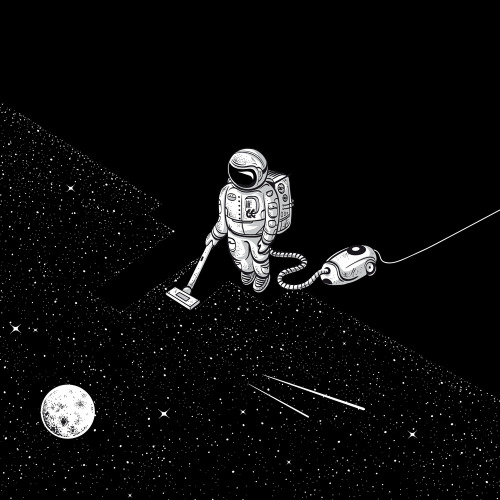
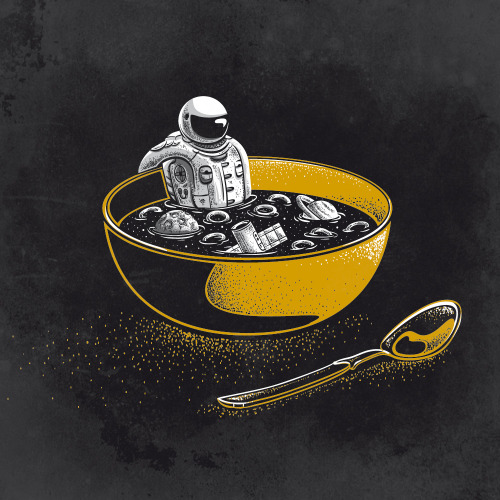
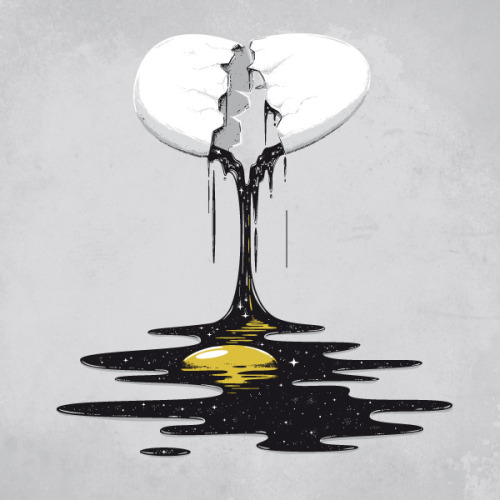
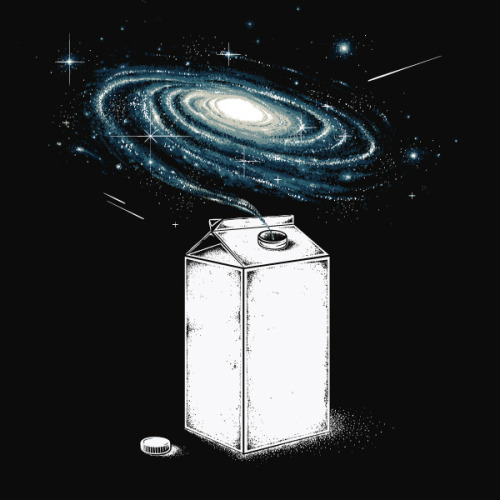
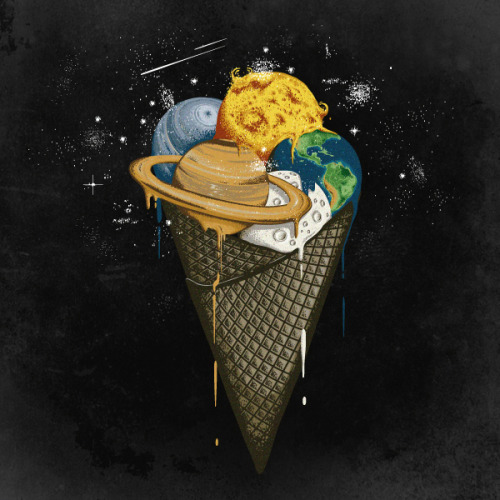




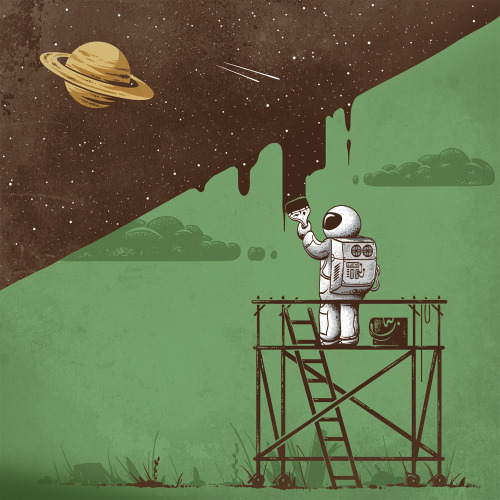
GERMANY: ILLUSTRATION: ROBERT RICHTER
Find Robert and MP on Facebook here and here.



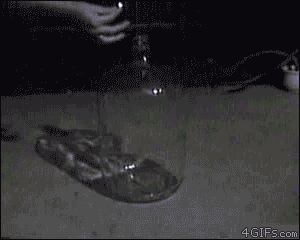
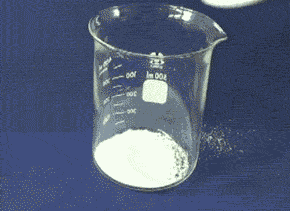
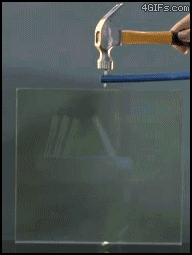




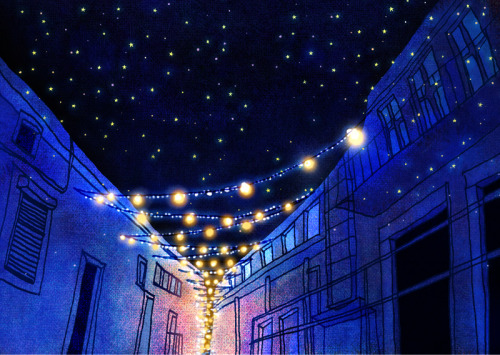
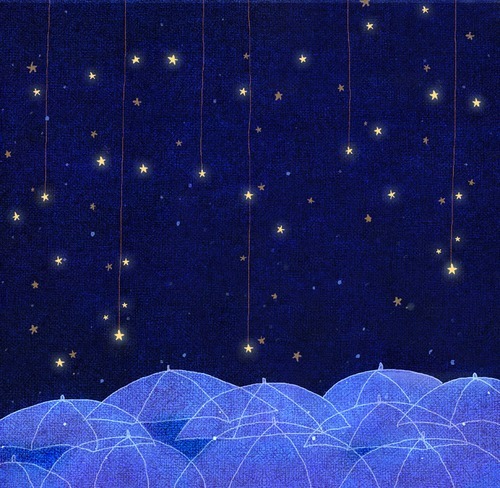




I really love these starry illustrations by Hajin Bae.

Street art by SAM3, an artist that paints big as well as small shadows and silhouettes in his urban surroundings.
-
 natus-ex-astris reblogged this · 9 years ago
natus-ex-astris reblogged this · 9 years ago -
 antaresdreams reblogged this · 9 years ago
antaresdreams reblogged this · 9 years ago -
 antaresdreams liked this · 9 years ago
antaresdreams liked this · 9 years ago -
 obe reblogged this · 9 years ago
obe reblogged this · 9 years ago -
 arise-awake reblogged this · 9 years ago
arise-awake reblogged this · 9 years ago -
 sometimespeopleneedhelp reblogged this · 9 years ago
sometimespeopleneedhelp reblogged this · 9 years ago -
 alienciv reblogged this · 9 years ago
alienciv reblogged this · 9 years ago -
 hockmed liked this · 9 years ago
hockmed liked this · 9 years ago -
 whatistrueforme reblogged this · 9 years ago
whatistrueforme reblogged this · 9 years ago -
 edam996 reblogged this · 9 years ago
edam996 reblogged this · 9 years ago -
 super-space-time reblogged this · 9 years ago
super-space-time reblogged this · 9 years ago -
 mylittlecoloruniverse liked this · 9 years ago
mylittlecoloruniverse liked this · 9 years ago -
 amishar01 liked this · 9 years ago
amishar01 liked this · 9 years ago -
 geekguitarist liked this · 9 years ago
geekguitarist liked this · 9 years ago -
 fisicaeducativa-blog liked this · 9 years ago
fisicaeducativa-blog liked this · 9 years ago -
 creamyapplering reblogged this · 9 years ago
creamyapplering reblogged this · 9 years ago -
 creamyapplering liked this · 9 years ago
creamyapplering liked this · 9 years ago -
 zchin1 liked this · 9 years ago
zchin1 liked this · 9 years ago -
 swarmerzasz liked this · 9 years ago
swarmerzasz liked this · 9 years ago -
 mooneyezstargazer reblogged this · 9 years ago
mooneyezstargazer reblogged this · 9 years ago -
 mooneyezstargazer liked this · 9 years ago
mooneyezstargazer liked this · 9 years ago -
 morpheoussilvercreature liked this · 9 years ago
morpheoussilvercreature liked this · 9 years ago -
 smartler reblogged this · 9 years ago
smartler reblogged this · 9 years ago -
 smartler liked this · 9 years ago
smartler liked this · 9 years ago -
 theoctavopeccatum reblogged this · 9 years ago
theoctavopeccatum reblogged this · 9 years ago -
 mullercells reblogged this · 9 years ago
mullercells reblogged this · 9 years ago -
 mullercells liked this · 9 years ago
mullercells liked this · 9 years ago -
 thatoneguyyouknow12345-blog liked this · 9 years ago
thatoneguyyouknow12345-blog liked this · 9 years ago -
 starhasarrived reblogged this · 9 years ago
starhasarrived reblogged this · 9 years ago -
 starhasarrived liked this · 9 years ago
starhasarrived liked this · 9 years ago -
 besafe2011 liked this · 9 years ago
besafe2011 liked this · 9 years ago -
 neilarmstrong reblogged this · 9 years ago
neilarmstrong reblogged this · 9 years ago -
 anonymous2553 liked this · 9 years ago
anonymous2553 liked this · 9 years ago -
 irisprismmlp liked this · 9 years ago
irisprismmlp liked this · 9 years ago -
 merymad69 liked this · 9 years ago
merymad69 liked this · 9 years ago -
 theeyepatchedghoul liked this · 9 years ago
theeyepatchedghoul liked this · 9 years ago -
 beauty-rendezvous liked this · 9 years ago
beauty-rendezvous liked this · 9 years ago -
 slightlyfrozenhell liked this · 9 years ago
slightlyfrozenhell liked this · 9 years ago -
 spacettf reblogged this · 9 years ago
spacettf reblogged this · 9 years ago